Making Of
To better understand the background of La Clef des Terroirs, you should know that Guillaume Bodin has never studied neither video nor cinema: His education lies in winemaking.
The idea for this documentary came during his work at wineries around the world, where he would hear the concept of biodynamics explained, both correctly and incorrectly. His mission thus became to get the word out about what biodynamic agriculture, particularly in the vineyard, really is.
When Bodin decided to make La Clef des Terroirs (Wine The Green Revolution), he had absolutely no idea about how much it would cost, nor did he have any way to fund it. So he started out by submitting a proposal project to the French government's Défi Jeune programme, which grants modest sums to youth who want to make a difference in their cultural or professional sphere. Originally, his project foresaw the making of a film direct to DVD.
Thanks to the proposal form that he had to fill out, he was forced to think through and detail each step of the project beforehand. He also created a small enterprise, Univers Ditvin, dedicated to the creation of a website to help winemakers form a community online, and also to finance his film.
Parallel to this was Bodin's work at Bret Brothers, a winery in the Mâcon area of Burgundy, which brought in a steady income. His presence at the Bret Brothers' vineyard Domaine de La Soufrandière in 2010 was a huge boon to the filming of his movie, because he was always present to get the best shots and to record the rhythm of the domaine.
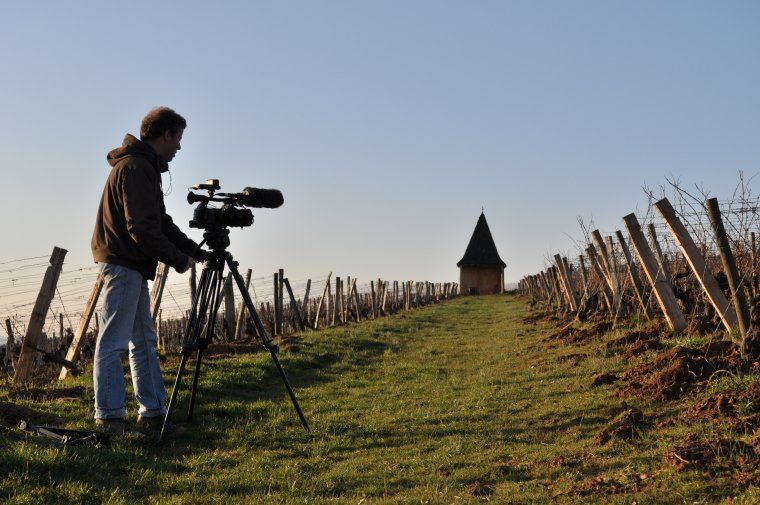
Bodin had decided at the outset that stunning images would play an important role in his film, so he invested in a semi-professional video camera (Sony PMW-EX1R). After a short training session – financed by Défi Jeune – at the Pascal Sandrin production studio in January 2010, he shot his first frames.
He still had many cinematographic decisions to take, notably whether the film would follow a strict documentary style, with few moving shots, or whether it would take advantage of the beautiful scenery and bring in a sense of magic, possibly to the loss of some authenticity. Ultimately, the case for stunning images won, for a new take on the idea of “documentary film”.
This choice meant that long takes would have to be stable. In addition to using a good tripod, there would be moving (dolly) shots, which require specific types of equipment and can be onerous to execute. The solution ended up being to make a camera dolly, adaptable to any situation. Hours of internet searches led Bodin to the website of the intrepid cameraman Tom Guilmette, whom he calls “an endless source of inspiration”. With the help of Denis Bienfait and the woodcrafting skills of Aurélien Colas, Bodin fashioned his own type of camera dolly, using a bit of contemplation ...and skateboard wheels.
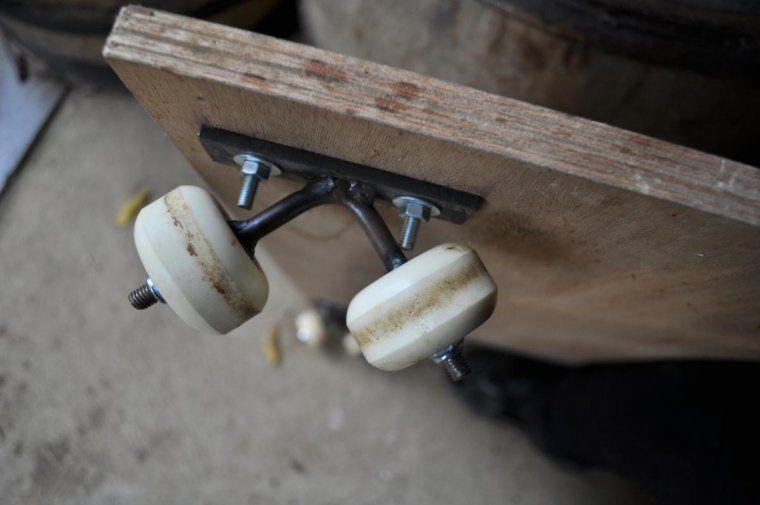
Some nuts and bolts, skateboard wheels, a piece of plywood... © Guillaume Bodin
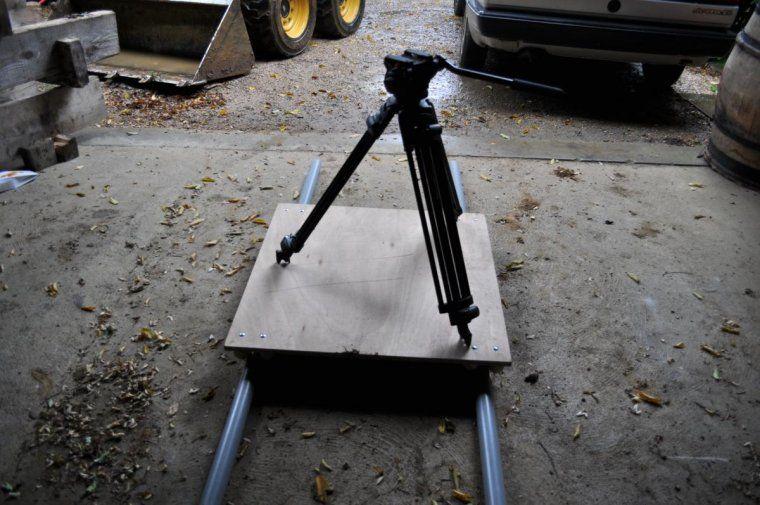
... and some drain pipes make a fine platform for travelling camera shots, possible to set up in less than 5 minutes. © Guillaume Bodin
The screenplay adaptable at will, the ultimate goal for La Clef des Terroirs was to get interviews with vignerons, winemakers and wine professionals who were capable of expressing themselves on their subjects of expertise in a clear, precise manner, with a few notes of humour thrown in for good measure. And that is where Bodin's viticulture-œnology education became very important. Firstly, it allowed him to converse with the winemakers in a friendly manner, making the interviews much more informative and comfortable. Secondly, his familiarity with the world of wine was essential in tracking down people different from those who had already appeared in documentaries on wine or organic agriculture.
Once all the images had been captured, it was time to enter the editing room. Forty-one hours of footage had to be condensed into 82 minutes. Before this, Bodin had only negligible experience in video editing, like making short films of his mountain climbing adventures or of family holidays shot on camcorder.
But believing that nothing is impossible, despite a minimal budget, he decided to edit the movie by himself. By chance, Bodin had met television producer and director Jean-Noël Roy and his wife, Marie Mehu, during their visit to Domaine de La Soufrandière at harvest-time 2010. Roy saw the potential in Bodin's venture, and offered to teach him editing skills. The two men clicked, and a new friendship was born as well.
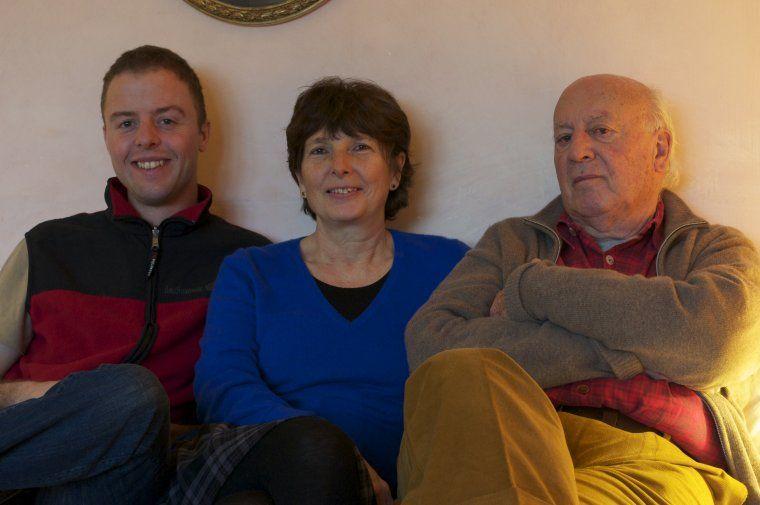
Guillaume Bodin, Marie Mehu and Jean-Noël Roy. © Guillaume Bodin
The process of editing is one of interweaving stunning images with pithy quotes from the interviews. What is said must be concise and meaningful, without being simplistic, or overly cerebral.
While Bodin was putting the film together, Roy prodded him to appear before the camera, as an actor in the film, so that viewers would make a connection between Bodin the filmmaker and Bodin the real human being. After a few trial runs, Bodin called upon a friend, involve in video and sound creation Silvère Cheret, to help, and the two shot the scenes featuring Bodin in his parents' cellar in Haute-Savoie in January 2010.
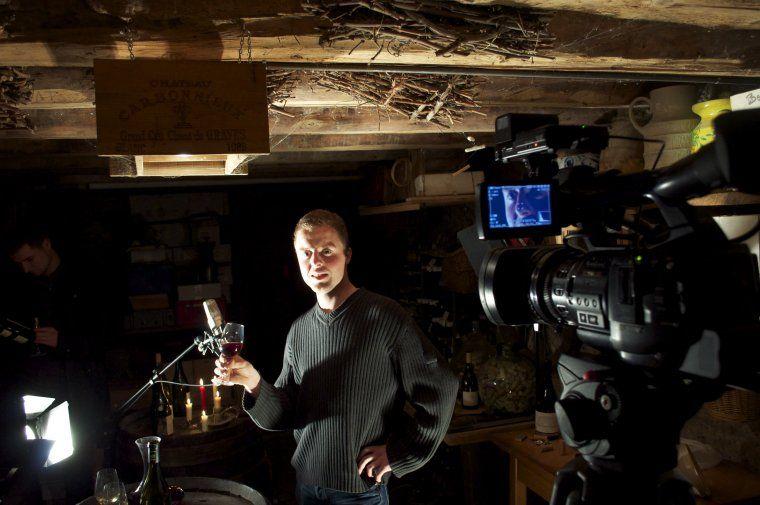
Guillaume Bodin working the tasting glass for a scene shot in his parents' cellar in Haute-Savoie. © Silvère Cheret
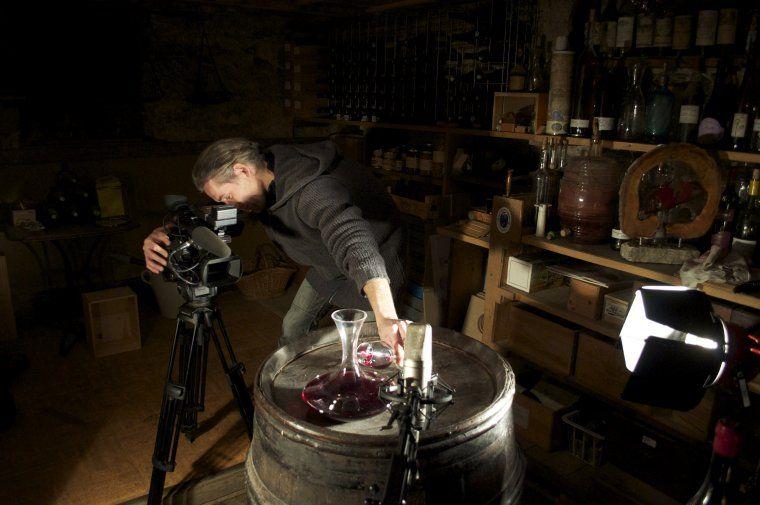
Musician and sound technician Silvère Cheret during the shoots in the Bodin cellar in Haute-Savoie. © Guillaume Bodin
After that, all that remained was the voice-overs, another collaboration between Bodin and Cheret.
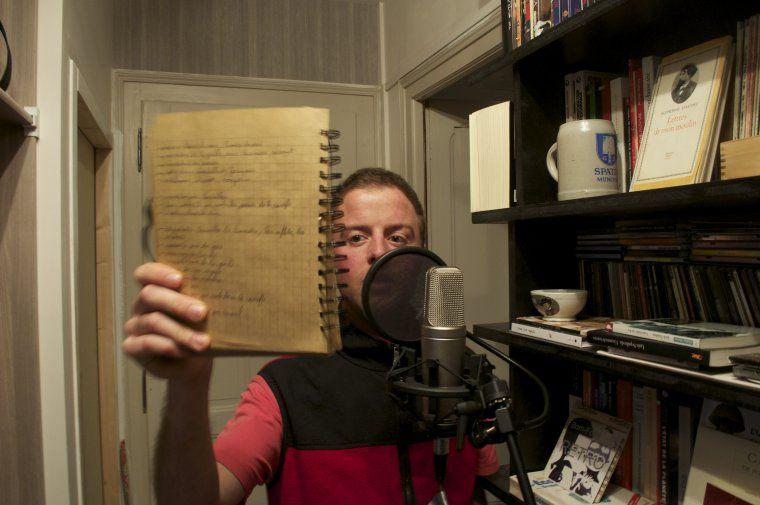
Recording the voice-overs in Silvère's flat. © Guillaume Bodin
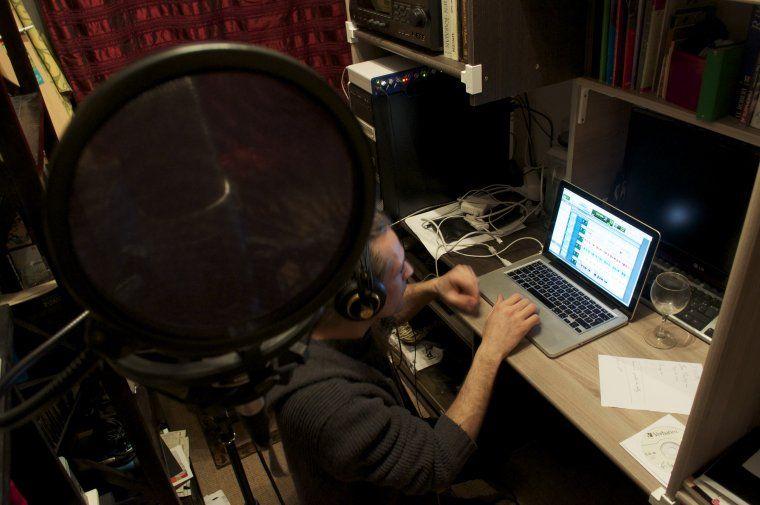
Recording the voice-overs in Silvère's flat. © Guillaume Bodin
By the end of January 2011, La Clef des Terroirs was practically done, ready to leave the computer after almost three months of editing.
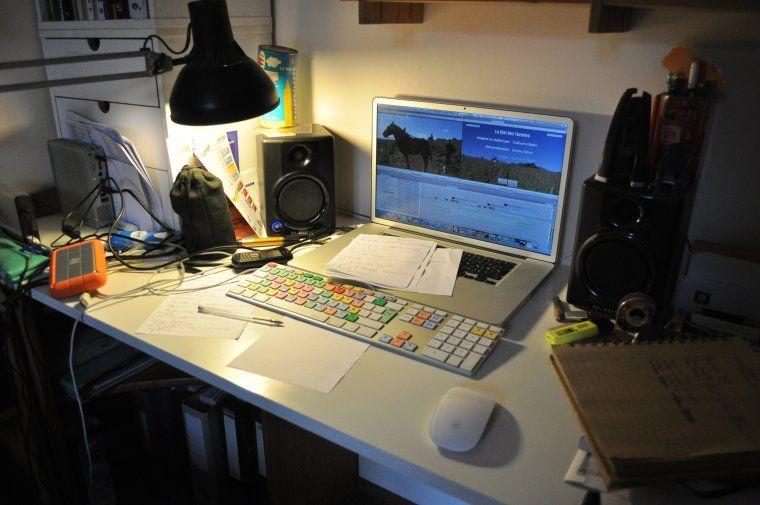
“What? The film is being edited on a laptop?” You bet! Minimal budget... minimal equipment. © Guillaume Bodin
The only things to do were the colour grading (assuring colour consistency and adjusting contrast) and sound editing (adjusting sound levels and adding sound effects where needed). Colour grading was best done with the guidance of professionals – notably Jonathan Klein and Marie Oudin, both of the independent post-production centre Studio 400 Coups. Views of Paris from Klein's tiny studio at the top of a building in the 9e arrondissement served as the backdrop.
Bodin took it upon himself to do most of the sound mixing, in an attempt to limit costs for an already-surpassed budget. Here again, Silvère Cheret was invaluable.
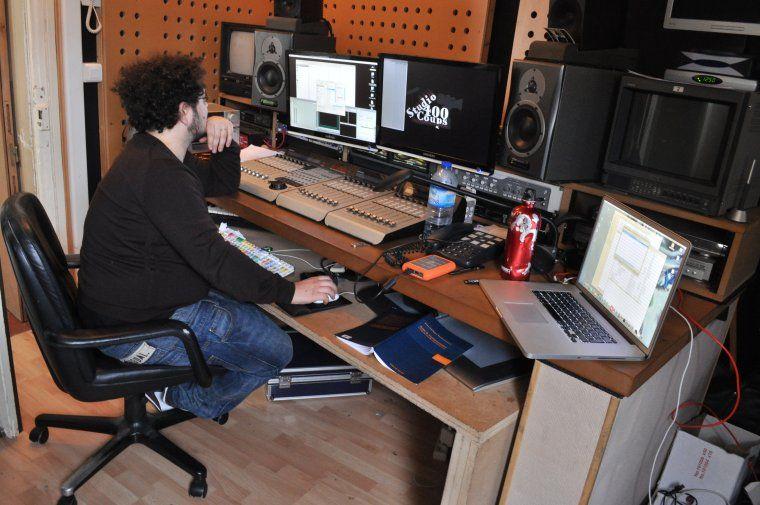
Post-production whith Jonathan Klein hard at work at Studio 400 Coups. © Guillaume Bodin
And so, at the end of February 2011, Bodin's documentary on biodynamics in wine, La Clef des Terroirs, was ready. It would be previewed for a select audience in a cinema in Mâcon on 11 March.
Thank's to Magdalena Rahn for the translation of this page.


